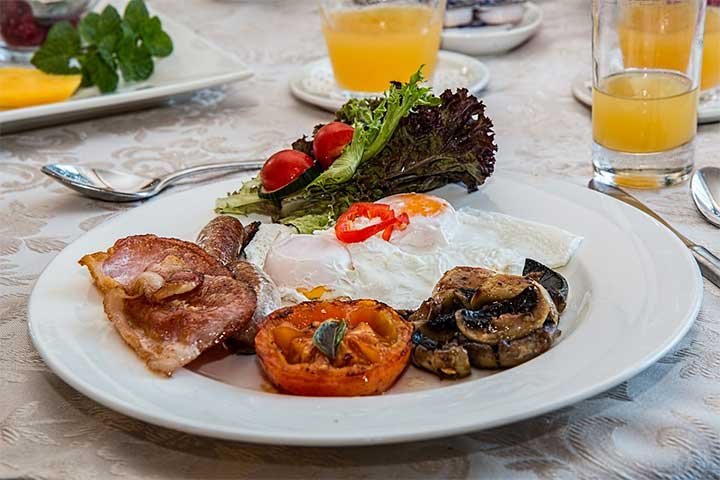
When it comes to cooking, there are many different techniques that can be used to prepare food. Two of the most popular methods are boiling and poaching. While these techniques may seem similar, they are actually quite different. In this article, we will explore the differences between boiling and poaching, including how each method works and what types of foods are best suited for each technique.
What is Boiling?
Boiling is a cooking technique that involves immersing food in boiling water or other liquids. This method is typically used to cook vegetables, pasta, eggs, and other foods that require high heat. Boiling is a quick and easy way to cook food, as it can be done in just a few minutes.
How does boiling work?
When you boil water, the heat causes the water molecules to move faster and faster, eventually reaching a point where they turn into steam. As the water boils, it generates heat that cooks the food. The boiling water also helps to break down the food, making it easier to digest.
When to use boiling?
Boiling is best suited for foods that need to be cooked quickly, such as vegetables, pasta, and eggs. It is also a good method for cooking foods that need to be fully submerged in water, such as corn on the cob.
Examples of food suited for boiling
- Vegetables (e.g. broccoli, cauliflower, green beans)
- Pasta (e.g. spaghetti, macaroni)
- Eggs (e.g. hard-boiled eggs)
- Corn on the cob
What is Poaching?
Poaching is a cooking technique that involves simmering food in liquid, usually water or broth. This method is typically used to cook delicate foods that require low heat, such as fish and poultry. Poaching is a gentle cooking method that helps to preserve the flavor and texture of the food.
How does poaching work?
In poaching, the food is placed in a pot of liquid and heated slowly to a temperature just below boiling point. This allows the food to cook gently and evenly, without becoming tough or dry. The liquid used for poaching can be flavored with herbs, spices, or other seasonings to add flavor to the food.
When to use poaching?
Poaching is best suited for delicate foods that need to be cooked slowly and gently, such as fish, poultry, and fruits. It is also a good method for cooking foods that need to be kept moist, such as poached eggs.
Examples of food suited for poaching
- Fish (e.g. salmon, halibut, tilapia)
- Poultry (e.g. chicken, turkey)
- Fruits (e.g. pears, apples)
Key differences between Boiling and Poaching
While boiling and poaching may seem similar, there are some key differences between these cooking methods.
Temperature
Boiling uses high heat to cook food, while poaching uses low heat. Boiling water Liquid used Boiling involves immersing food in boiling water or other liquids, while poaching involves simmering food in liquid, usually water or broth. The liquid used for poaching can be flavored with herbs, spices, or other seasonings to add flavor to the food.
Cooking time
Boiling is a quick cooking method, usually taking just a few minutes, while poaching is a slower cooking method that can take longer, depending on the type of food being cooked.
Pros and cons of Boiling and Poaching
Each cooking method has its own set of advantages and disadvantages.
Boiling Pros:
- Quick and easy
- Ideal for cooking vegetables, pasta, and eggs
- Can be used to sterilize water for drinking
Boiling Cons:
- Can result in loss of nutrients in food
- Can make food too soft or mushy
- Not ideal for delicate foods
Poaching Pros:
- Gently cooks delicate foods without drying them out
- Can be used to infuse flavors into the food
- Creates a flavorful broth that can be used in other recipes
Poaching Cons:
- Takes longer than boiling
- Can be difficult to get the temperature just right
- Not ideal for foods that need a crispy exterior
Conclusion
Boiling and poaching are both popular cooking methods that can be used to prepare a variety of foods. While they may seem similar, they are actually quite different, with unique advantages and disadvantages. Understanding the differences between these methods can help you choose the best technique for preparing different types of food.
FAQs
- Can you boil and poach food at the same time?
- It is possible to combine these methods in some cases, such as boiling pasta and then poaching shrimp in the same pot.
- Can you boil eggs instead of poaching them?
- Yes, boiled eggs can be used as a substitute for poached eggs in many recipes.
- Can you poach meat?
- Yes, meat can be poached in liquid, but it is not a common method for cooking meat.
- Is poached food healthier than boiled food?
- Both methods can be healthy, as they don’t require added fats or oils. However, poaching is often considered a healthier cooking method for delicate foods, as it can help to preserve their nutritional value.
- Can you reuse the liquid used for poaching?
- Yes, the liquid used for poaching can be reused in other recipes, such as soups or stews.



